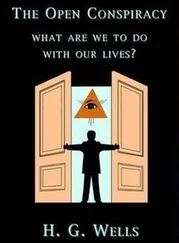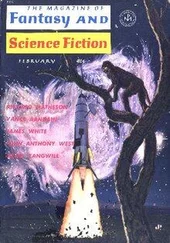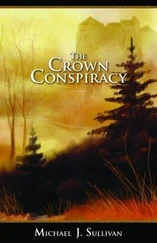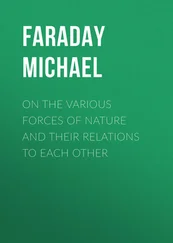Similarly, the authors and commentators on the right-wing populist American website breitbart.com, whose former editor-in-chief Steve Bannon was one of President Trump’s top advisers for a time, have attempted ever since Trump’s election to dismiss as a conspiracy theory the well-founded suspicion that the Kremlin sought to influence the polls. At the same time, however, the site produces an endless stream of accusations of its own which others would call conspiracy theories. Users commenting on, for instance, an article of 12 December 2016 about the Russia affair agreed with the author that the whole thing was a conspiracy theory put about by the Democrats, yet many of them promptly went on to make counter-accusations – naturally without applying the term to their own case. Comments included an urgent call for Trump to investigate the billionaire George Soros, accusing him of undermining democracy in the USA with his ‘187 radical organizations’. 22
Given its negative associations, it is hardly surprising that there is a conspiracy theory about the term ‘conspiracy theory’. If you google ‘origin term conspiracy theory’, you will find precious little about Karl Popper, but countless pages claiming that the CIA invented the term to discredit those who doubt the official version of the Kennedy assassination. Again and again, CIA memo 1035–960 from 1967 is cited by way of evidence. Contrary to common claims, however, this memo was not made public only recently, but as early as 1976, as can be gleaned from the document itself. And more importantly, the memo does not prove the theory about the term’s invention. It merely provides arguments refuting the conspiracy theories – already popular at the time – surrounding the Kennedy assassination. The document states that ‘Conspiracy theories have frequently thrown suspicion on our organization’, and goes on to say: ‘The aim of this dispatch is to provide material countering and discrediting the claims of the conspiracy theorists.’ However problematic we may find this, the use of the terms ‘conspiracy theories’ and ‘conspiracy theorists’ without further definition or explanation shows they were obviously already in everyday use when the memo was written, and not coined by its authors. 23
Even if the term ‘conspiracy theory’ was not invented in order to discredit undesirable alternative versions of events, there is nevertheless no doubt that this is one of its main functions in everyday speech. In his book Conspiracy Panics ( Conspiracy Theory Panics would have been a more appropriate title), Jack Bratich therefore rejects the rationale of most academics – which I too espouse in this book – and calls for an alternative approach. For Bratich, the concept of the conspiracy theory is not characterized by the duality between definable characteristics that allow a neutral use of the term, and stigmatization, which stands in the way of such a use. To him, it is purely and simply a means of stigmatization and thus delegitimization. 24
Bratich is strongly influenced by Michel Foucault’s idea that power generates knowledge and not vice versa, since it is ultimately those in positions of power who determine what does or does not constitute knowledge. Therefore, Bratich argues, it is impossible to determine on the basis of identifying characteristics – a group acting in secret, an evil plan, etc. – what a conspiracy theory is or is not. Rather, the term is used in common parlance as a way of discrediting a certain idea: ‘In other words, the question is no longer, “what is a conspiracy theory?” but “what counts as a conspiracy theory?”’ According to Bratich, the term is a weapon used to denounce certain views as illegitimate and false. No more, but also no less. 25
It is true that ideas are often vilified as conspiracy theories even if they don’t have any of the characteristics described at the beginning of this chapter. Not every opponent of vaccination is a conspiracy theorist in the sense that I have used the term so far. That label should only be applied to those who believe that there are forces seeking to conceal the fatal consequences of vaccination from the public, or even to use it to manipulate or subdue the population. All too often, however, the term is used indiscriminately to denigrate anyone with a critical attitude to vaccination.
Conversely, there are ideas and claims which exhibit the characteristics of a conspiracy theory, but are not described as such – at least not initially – because those who promote them are powerful enough to control the discourse on the subject in question. One fateful example from the recent past was the claim by the Bush administration that Saddam Hussein was allied with Osama bin Laden and that the two intended to act in concert to damage the USA. This may sound absurd in hindsight, but in 2003 a significant proportion of the US population genuinely believed it. The claim helped to legitimize the invasion of Iraq. And there is no doubt that it fits the definition of a conspiracy theory: it asserts that two evildoers – Saddam and Osama – and their underlings secretly collaborated in the pursuit of a deadly plan; in so doing, it links together disparate phenomena whose connection is not apparent to the neutral observer. Moreover, the claim was – as events were to prove – untrue. 26
The example of the Iraq War also points to a problem in Bratich’s argument. He assumes that any phenomenon labelled a conspiracy theory always contradicts an official version. He is not alone in this: many scholars, including those who have no quarrel with the concept of the ‘conspiracy theory’, take a similar view. And it is true that most conspiracy theories advanced in the Western world in recent decades have been directed against an official narrative, that is, one that is subscribed to by elites, the media and the majority of the population. Yet for a time, the Bush administration’s claim that Saddam Hussein was secretly in cahoots with al-Qaida was itself the official version in the USA. And in other cultures, such as Eastern Europe and the Arab world, conspiracist suspicions are regularly voiced by elites and the established media. Indeed, many of the above examples show that, historically speaking, the idea that most conspiracy theories are directed against an official version is not borne out for Europe or North America either. There too, the claim that the state was threatened by a major plot was, until the middle of the twentieth century, often the official story. 27
If we argue historically, a second problem comes into focus. According to the logic of Bratich’s strictly Foucauldian approach, conspiracy theories have only existed for as long as the term has been used in its modern sense, i.e. since the mid-twentieth century. If this is the case, what do we make of the obvious ‘conspiracy claims’ of past centuries? What about texts such as Samuel Morse’s anti-Catholic pamphlet Foreign Conspiracy against the Liberties of the United States , which, like countless other examples from the eighteenth, nineteenth and early twentieth centuries, offers far more than vague suspicions? This tract describes the alleged conspiracy in detail over hundreds of pages, supplies a wealth of ‘evidence’, and has many rhetorical, structural and ideological similarities with twenty-first-century books and videos such as the Loose Change films or David Ray Griffin’s The New Pearl Harbor , both of which accuse the Bush administration of being behind the 9/11 attacks. Do we not lose more than we gain if we refuse to regard such a text as the articulation of a conspiracy theory?
For all of Bratich’s justifiable scepticism vis-à-vis the term ‘conspiracy theory’, its use does not have to be confined to the disqualification of unpopular claims. The term can still be used in a relatively neutral sense, since it is possible – as I have shown – to formulate criteria for deciding when it is and is not appropriate. The fact that it is often misused does not invalidate its use per se. And such a neutral use is even possible if one assumes, as I do, that conspiracy theories are usually false. In fact, many scholars across all disciplines are sceptical about the truth claims of the people and narratives they study – take, for example, scholars of religion, anthropologists or historians who study what previous ages regarded as valid knowledge.
Читать дальше












